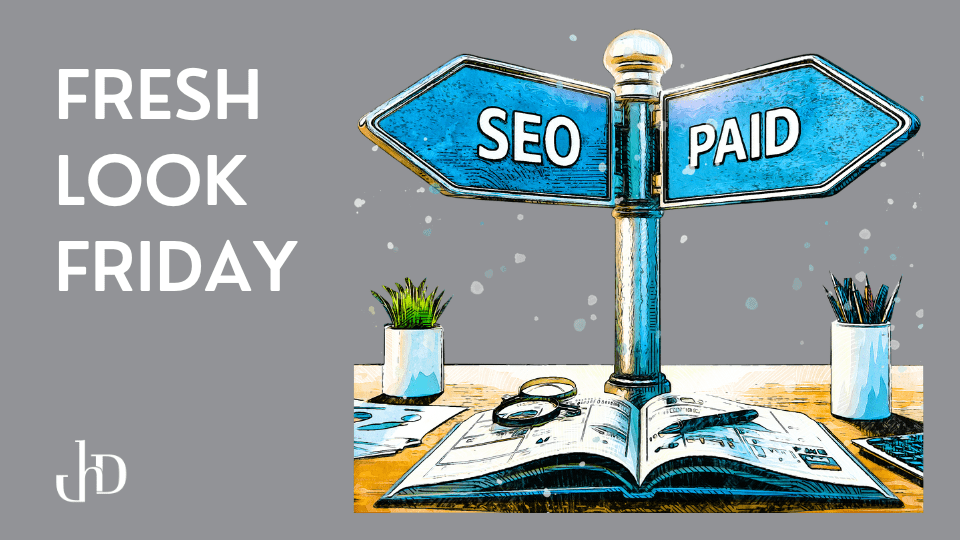
Choosing Between SEO and Paid Ads for Your Business
When it comes to exploring marketing strategies that yield a solid return on investment, feeling overwhelmed is natural. Even before thinking about reaping rewards in sales, your first hurdle is reaching your target audience. Small businesses often wonder whether search engine optimization (SEO) or paid advertising should be their priority for achieving this, and each approach has its own set of pros and cons. Let's get into the advantages and drawbacks of both, determine the best fit for your business, and provide you with valuable tips to maximize your chosen strategy's potential.
How SEO Works
SEO functions on the principle of enhancing a website’s quality and relevance to rank high in search engine results. It involves optimizing aspects of your site such as content, technical setup, and user experience to align with the algorithms used by search engines to rank pages.
SEO strategy includes keyword research to identify terms that your target audience searches for, on-page SEO to optimize the content and HTML source code of pages, and off-page SEO to build links and signals from other sites. Over time, these continuous efforts work together to boost your website's visibility, credibility, and user engagement.
Leveraging Long-Term SEO
At the end of the day, SEO is all about boosting your website's visibility in search engine results and establishing credibility and trust with your audience. It's a top choice for businesses due to its long-term impact and perceived cost-effectiveness, and you can create a great user experience that turns potential customers into loyal ones with the help of SEO.
It's also worth noting that SEO is a marathon, not a sprint. It takes time to yield tangible results. However, once those benefits start materializing, they tend to endure over the long run. It's about building a strong online presence that can withstand changes in search engine algorithms and consumer trends.
Here are some tips for leveraging SEO effectively:
- Do Your Keyword Research. Use tools like Google Keyword Planner or SEMrush to find the right keywords for your content.
- Quality Over Quantity. Create high-quality content that adds value to your audience. This includes blog posts, infographics, videos, and visual appeal.
- Optimize Your Website. Make sure your website is easy to navigate, mobile-friendly, and fast-loading. Use tools like Google's Mobile-Friendly Test to check your site's mobile usability.
While SEO takes time, it's worth it in the long run. Paid ads, on the other hand, are quicker wins.
How Paid Ads Work
Paid ads involve paying for ad placement on search engine results pages or social media platforms. This approach allows you to target your ads to a specific audience based on factors like location, demographics, interests, and more. When done right, paid ads can drive traffic, leads, sales, and conversions.
As a prime example, Meta is a widely used platform that leverages paid ads for e-commerce. If you aim to expand your shop specifically on Facebook or Instagram, it is crucial to grasp the fundamental principles of Meta for paid ads. This approach proves highly effective in boosting local and global customer acquisition rates.
Get Quick Wins with Paid Ads
Paid advertising offers fast results and often provides more control compared to traditional marketing strategies. With curated campaigns and tailored messaging, you will reach specific audiences. However, paid ads come at a cost, so it’s important to ensure that you’re making a return on your investment. When executed correctly, paid advertising is an exceptionally effective method for generating traffic and driving sales by quickly increasing visibility and reaching your targeted audience.
Here are some tips for making the most out of your paid ad campaigns:
- Set Clear Goals: Whether it's driving traffic, increasing conversions, or boosting brand awareness, having clear goals will help you measure success.
- Target Your Audience: Use demographic targeting to send an engaging message to the right people. This includes age, location, interests, and more.
- Test and Optimize: Regularly review your campaign performance and make necessary adjustments. Tools like Google Ads provide detailed analytics to help you optimize your campaigns.
SEO vs. Paid Ads: Which One Is Right for You?
The choice between SEO and paid ads depends on your business goals, budget, and timeline. If you're looking for long-term, sustainable growth, SEO might be your best option. If you need quick results or have a specific target audience in mind, paid ads could be the way to go.
Remember, it's not always about choosing one over the other. A balanced digital marketing strategy often includes both SEO and paid ads. So, are you ready to say yes to a comprehensive digital marketing strategy? Just fill out the form below and our experts set you up with a plan that converts your website visitors into loyal customers.
